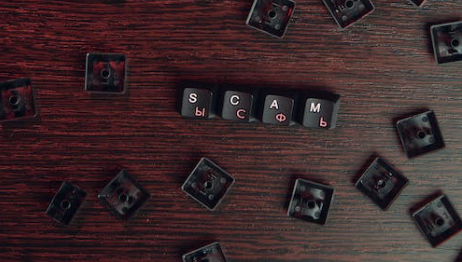WFH day today, I began with a “refreshing” 7-mile run after the alarm clock buzzed. With a cup of soothing Jasmine tea in hand, I opened my laptop to check Twitter, of course, before emails.
Then I stumbled upon this thought-provoking video clip:
As a parent of two primary school-aged children, I felt a little panic and immediately started to wonder if I had shared my children’s photos on open social media platforms. Thankfully, my tea has not spilled over my laptop yet.
With over a decade of experience in the education sector, I have assisted schools in establishing social media accounts and posts. However, this video compelled me to reflect on the potential misuse of deep fake AI and its impact on schools’ social media campaigns and parents’ consent to share their children’s photos.
As technology rapidly evolves, so do the risks associated with social media usage, especially when it comes to protecting our children’s and our own privacy and digital footprints. This video certainly highlights the dangers of oversharing and the potential threats posed by deep fake AI.
How can we protect ourselves and our children from the risks of deep fake AI and still enjoy social media interactions?
AI technology has made significant strides in recent years, enabling malicious actors to create realistic but fabricated content, including videos and images. These manipulated media can deceive and exploit innocent individuals, posing a significant threat to our children’s digital identity and privacy. As parents, it’s crucial to be aware of these potential dangers and take proactive steps to protect our little ones and ourselves.
After swapping my tea for a black coffee, I’m thinking I should discipline myself on Social Media in the future:
– Avoid sharing intimate details or sensitive information that could be used to create convincing deep fake content.
– Double-check privacy settings to ensure my content and details are not exposed to anyone should not have access.
– Regularly review my posts and avoid mishaps, especially after a few glasses of wine.
– Stay vigilant about others’ posts too; is it real? Does it sound like the person I know?
– Stick to social media platforms that have robust measures in place to combat deep fake AI. I used to be a big Twitter fan, but I’m not so sure anymore. I prefer LinkedIn now, which might help with future job prospects 😊
– Perhaps there is an easier way to watermark our social media photos?
I would like to continue sharing my photos and my children’s journey on social platforms with my online and offline friends. And certainly I wouldn’t mind if our children’s school shares their school photos on their social media accounts. However, I believe both parents and schools should be mindful of the risks due to technological advancements and the dark side of human behaviour.
– Share moments that are meaningful and relevant to our children’s journey, while being cautious about oversharing.
– Choose quality over quantity, focusing on building meaningful connections and interactions rather than striving for a high number of followers or likes.
– Engage with other people who share similar concerns about online safety, exchanging tips and advice.


